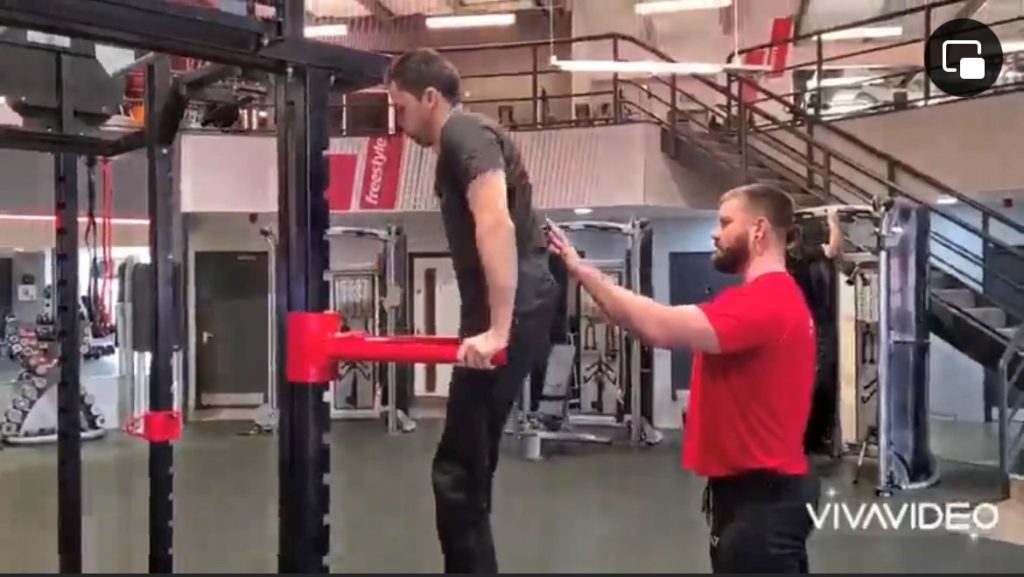This year’s Mental Health Awareness Week is all about movement and the benefits of being active for mental health.
To mark this important time in the calendar, we caught up with three Team BRIT drivers who place movement and exercise at the centre of their weekly routine.
Noah Cosby

18-year-old Noah broke his back in a motocross accident. Before his accident, he was an experienced and successful motocross freestyle rider and was set to pursue his dream of competing professionally in America. Noah was also a regular skateboarder.
Now, despite being paralysed from the chest down, Noah works out regularly and does everything he can to have a fit and strong mind and body for racing, but also for daily life.
He explains: “When I lost the use of my legs, I lost a huge part of my identity. I was used to being outdoors and active all the time, and almost all of my spare time was spent skateboarding or riding motocross. This also happened when I was at high school, so at times I felt like my life as I knew it was over. All of a sudden I couldn’t do what I loved, couldn’t be out with my friends, and I couldn’t be who I wanted to be.

“My mental health was really affected and there were some dark times. I came through it with the support of my family and friends, and also through finding new ways to keep active and experience adrenaline.
“I am part of the Hambo Foundation and use their adapted gym and rehabilitation facilities regularly, also having PT sessions with the incredible James Sutcliffe who is also disabled. My gym routine is all about building strength and endurance as a wheelchair user, everything from pull-ups to adaptive clean and press, and pushing my chair up a hill!

“Movement to me is critical. It helps me be me, and of course makes sure I’m as competitive as I can be on the track.”
Aaron Morgan

33-year-old Aaron Morgan broke his back at the age of 15, when riding his favourite motocross track. He was just 15 when this happened, and thanks to the support of the professionals caring for him in hospital, he was active quicker than expected, undertaking driving lessons during the day, then returning to the hospital ward. He also returned to motorsport quickly and became the youngest ever disabled person to attain a National ‘B’ racing licence.
He says: “When you experience a major injury as a teenager, and everything about life changes, it’s a massive thing to cope with. At 15, you don’t really think about the potential for things to go drastically wrong, you’re focussed on having fun, studying and thinking about the future.
“When you become disabled, the impact on mental health can be huge, and for many people, it changes their mental wellbeing forever. I consider myself really lucky that for the most part, I’ve managed to stay really positive in my outlook. I nearly died and didn’t – so I actually feel really lucky to have been given a second chance. People look at me strangely when I say that – but it’s true!
“Being a motocross rider, movement and activity was always really important to me, so I didn’t for a minute consider stopping this after the accident. When I learned that disabled people can get their driving licences earlier than able-bodied people, I was straight into lessons from hospital and from then on, I knew I could get back into racing.

“I’ve been competitively racing since I was 21, so for me, movement is a key part of who I am and is essential to being serious about racing. I want my mind and my body to be fit, so that involves regular gym work plus wheelchair training.
“A big part of staying fit for me is that it helps me live independently. I need to be strong to push my wheelchair or to transfer into my car or bed, all without getting too tired. I know people find my gym workouts fascinating. When I’ve posted videos of my gym videos online, the reaction is massive.

“People need to understand that a disability doesn’t need to stop you from being active, you just have to think differently and find ways to make it work for you.”
Tyrone Mathurin

44-year-old Tyrone is an ambassador for the team, having driven for 2 seasons from 2022-2024. He was involved in a motorbike crash, which resulted in brachial plexus syndrome, where nerves attached to the spinal cord become damaged. The treatment he received following the accident caused a bleed, resulting in him being paralysed. He eventually regained the use of most of his body, but has limited use of his right arm and leg.
“The mental health impact of disability is massively underestimated. When your life is turned upside down and you see no way out, it can be overwhelming and difficult to accept.
“At one point, the only way I could communicate from my hospital bed was by blinking at letters in the alphabet. I’m not sure how I coped at the time, and the idea of ‘movement’ back then was unthinkable and a dream that I didn’t know I’d get to. Thankfully, my family remained by my side and helped me through.
“Now, because I have movement back, I’ll never take it for granted and I work hard at being as active as I can within the limitations of my disability. I was inspired by another disabled person who I saw at the gym, and realised I could enjoy movement again too. Since then, gym sessions have been a big part of my life. I want to be as strong as I can be, and I’ll keep moving for as long as I’m able.”



